 Photo by Joshua Rawson-Harris on Unsplash
Photo by Joshua Rawson-Harris on UnsplashEvery day, we make choices that affect the environment. What we eat, what we buy, and what car we drive produces a carbon footprint that affects climate change, including rising sea levels and extreme weather conditions. According to The Natural Conservancy, the average person generates about 4 metric tons of carbon dioxide emissions per year!
But don’t worry — you don't have to grow your own vegetables, buy an electric car, or lead an environmental activist group to make an impact in the world.
By incorporating small, low-waste living practices in your everyday life, you can make a big difference.
What is low-waste living?
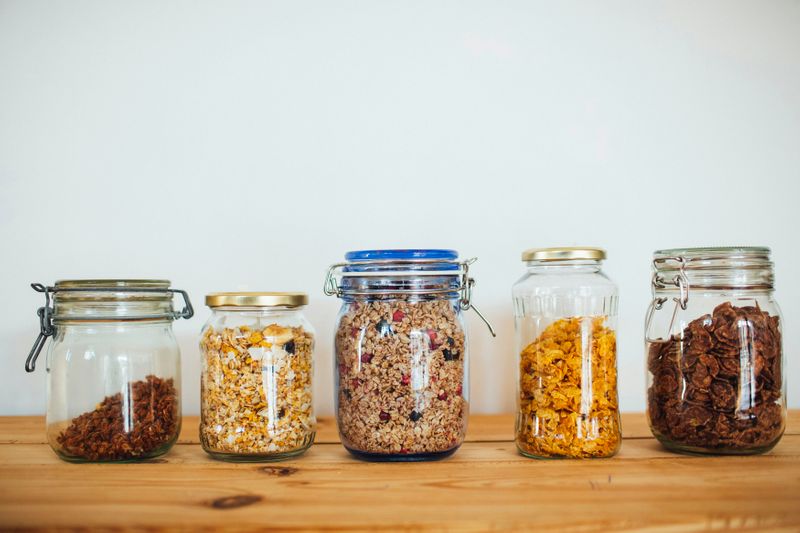 Photo by Markus Spiske on Unsplash
Photo by Markus Spiske on UnsplashLow-waste living is a lifestyle that aims to reduce waste by making mindful, eco-friendly choices and minimizing the amount of material we throw away.
Low-waste living is like zero waste living but more accessible and less focused on the "perfection" often associated with zero waste. Not everyone has access to sustainable grocery stores or has the money to fully switch to eco-friendly products.

It's impossible to be 100% waste-free, but that doesn't mean you shouldn't try to reduce waste. After all, low-waste living is mindful living — you're making an active effort to reduce waste by asking yourself the following:
Do I need this item? Can I use what already have?
Is there an (eco-friendly) alternative to this item?
Can I afford the alternative version?
Is this item sustainable for my lifestyle?
Method #1: Reduce single use items
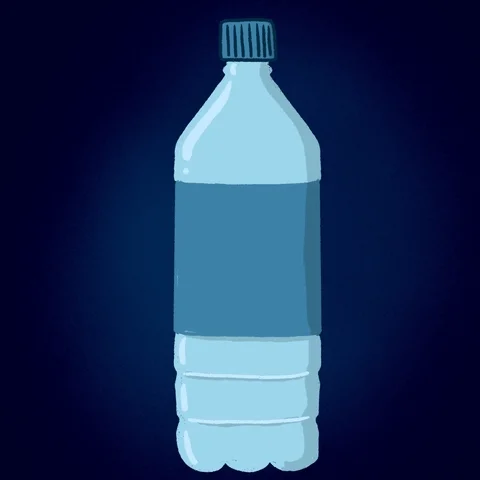
One of the most efficient ways to practice low-waste living is to reduce single-use items.
Single-use itemsare products or packaging designed to be used once and thrown away. For example:
Plastic forks, spoons, and knives
Plastic water bottles
Disposable Razors
Take-out containers
Straws
What can you do?
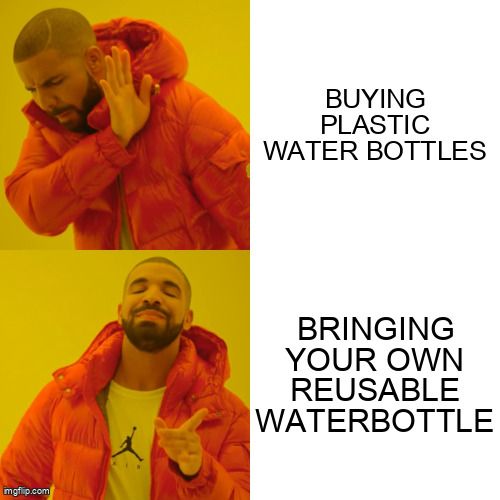
To reduce the use of single-use items, you can try the following:
Buy quality reusable alternatives. Consider buying stainless steel water bottles, stainless steel/glass straws, or reusable shopping bags.
Bring your own utensils. We all like to hang out with friends, and 99% of the time, we grab food or drinks with them! You can start bringing your own portable straws or utensils.
Buy in bulk. Buying bulk items, like 5 lb. of rolled oats (if you're into that), instead of individually packaged oatmeal servings. They're usually cheaper too!
What if I use single-use items?

Sometimes it's inevitable to avoid single-use items. Maybe you forgot your tote bag at home and had to settle with plastic bags.
If you find yourself in this situation, think of creative ways you can re-purpose single-use items. For example:
Plastic bags: Use them as mini-desk trash bags, or collect enough to weave them into a crochet tote bag!
Plastic bottles: Make a bird feeder or save the bottom part to make planters.
Sauce jars (glass): Store spices or make candles!
Egg cartons: Make seed starters, paint palettes, or desk organizers!
Ultimately, to reduce single-use items, you want to stop and ask yourself:
"Can I find an alternative to this product?" or "Can I repurpose this product?"
Method #2: Buy items from the thrift store

Thrift shopping is more than just a trend — it's one of the most impactful ways to reduce waste.
The fashion industry is a major contributor to landfill waste. In 2023, around 21 million tons of unwanted/unsold clothes and packaging materials were disposed of! Thrift shopping can alleviate this issue by providing clothes a chance to be worn again.
"Which thrift store should I go to?"
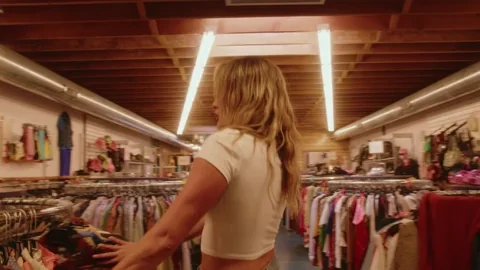
There's usually a local thrift store in every community, but you can find thrift store chains like:
Goodwill (USA/Canada)
The Salvation Army (USA/Canada)
Savers/Value Village (USA/Canada)
Plato's Closet (USA)
Value Village
Thrift shopping is an easy way to practice low-cost living. Not only are you finding unique and affordable items, but you're also helping the environment by reducing textile waste and conserving resources.If there are extra clothes in your closet, feel free to donate those too!
Method #3: Visit your local farmer's market
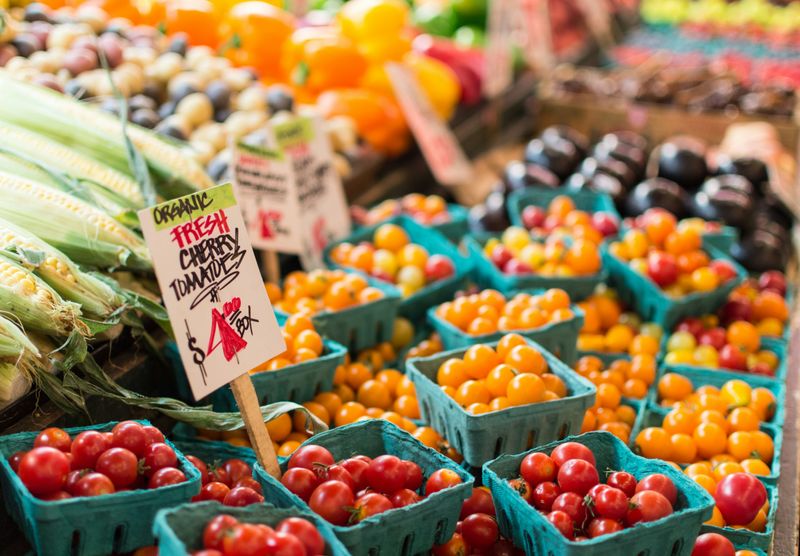 Photo by Anne Preble on Unsplash
Photo by Anne Preble on UnsplashThe farmer's market is a great place to get fresh, in-season, and local produce, and also one of the best places to practice low-waste living.

Reduces packaging waste
One thing you may notice when you visit a local farmer's market is that they're free of packaging waste — no plastic ID stickers, plastic packaging, or grocery bags.
Instead, you'll find fresh produce displayed in eco-friendly baskets and containers. Farmers often sell in bulk, so it's encouraged to bring your own bags, jars, or baskets to the farmers market.

Avoids food waste
More than 20 billion pounds of "misshapen" or "imperfect" foods are wasted every year in the U.S. The farmers sell all of their locally grown produce, "ugly" or not! These "ugly" fruits and vegetables have the same nutritional value as their "normal" shaped peers.
So next time you see a twisted carrot or bumpy apple, embrace their uniqueness and add them to your basket.
What else can you find at a farmer's market?

Farmer's markets are often accompanied by other vendors who make hand-made goods and crafts. You'll find unique items like handcrafted soaps, candles, pottery, and jewelry — all of which are created and packaged using recycled, upcycled, or biodegradable materials.
Visiting the farmer's market is a fun way to practice a low-waste lifestyle while also connecting with your community.
Quiz time!

Let's use what we learned today to help our friend Tatum shop sustainably at the grocery store. What are some choices she can make to practice low-waste living? Select all that apply:
A. Bring reusable shopping/produce bags.
B. Purchase large bulks of individually packaged-single serving snacks.
C. Buy items with cardboard packaging or recyclable/compostable materials.
D. Choosing organic-only produce.
Quiz
For question above, select all that apply:
Take Action

Congrats! You learned 3 simple ways to practice low-waste living.
Want to start now? Follow the tips below!
Your feedback matters to us.
This Byte helped me better understand the topic.
